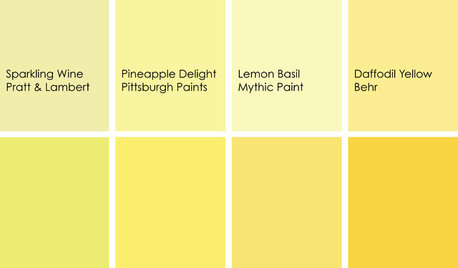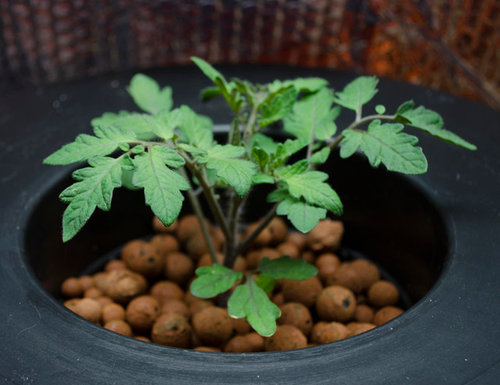Tomato yellowing top leaves
biggyboy
10 years ago
Related Stories

EDIBLE GARDENSSummer Crops: How to Grow Tomatoes
Plant tomato seedlings in spring for one of the best tastes of summer, fresh from your backyard
Full Story
FALL GARDENING5 Ways to Put Fall Leaves to Work in Your Garden
Improve your soil and yard the organic way with a valuable garden booster that grows on trees
Full Story
DECORATING GUIDES9 Easy Ways to Decorate With Autumn Leaves
Give your home a burst of color that can be used Halloween through Thanksgiving
Full Story
LAUNDRY ROOMSRoom of the Day: The Laundry Room No One Wants to Leave
The Hardworking Home: Ocean views, vaulted ceilings and extensive counter and storage space make this hub a joy to work in
Full Story
DECLUTTERINGDownsizing Help: Choosing What Furniture to Leave Behind
What to take, what to buy, how to make your favorite furniture fit ... get some answers from a homeowner who scaled way down
Full Story
GARDENING GUIDESWhat's Wrong With My Plant? Leaves Often Hold the Clues
Learn how to identify common plant ailments by reading their leaves
Full Story
SHOP HOUZZShop Houzz: Brighten Up Your Kitchen With Yellow
Enliven your kitchen with these Houzz finds that are sure to leave you sunny side up
Full Story
KITCHEN DESIGNCooking With Color: When to Use Yellow in the Kitchen
Perk up your kitchen with a burst of Pineapple Delight or a dollop of Top Banana on the walls, cabinets or countertops
Full Story
COLORWelcome Yellow Around Your Home for an Instant Lift
Keep on the sunny side with shades of yellow from buttery and soft to dynamic and bright
Full Story
EXTERIOR COLORWhen to Paint Your Home Yellow
Be a cheer leader with this color that captures the sun and radiates a warm welcome
Full StoryMore Discussions








PupillaCharites
biggyboyOriginal Author
Related Professionals
Maple Valley Landscape Architects & Landscape Designers · Bellflower Landscape Architects & Landscape Designers · Ferndale Landscape Architects & Landscape Designers · Forest Acres Landscape Architects & Landscape Designers · Glendora Landscape Architects & Landscape Designers · Kapaa Landscape Architects & Landscape Designers · North New Hyde Park Landscape Architects & Landscape Designers · Wakefield Landscape Contractors · Americus Landscape Contractors · Barrington Landscape Contractors · Concord Landscape Contractors · Dixon Landscape Contractors · Fair Lawn Landscape Contractors · Indio Landscape Contractors · Wareham Landscape ContractorsbiggyboyOriginal Author
PupillaCharites
biggyboyOriginal Author
biggyboyOriginal Author
PupillaCharites
biggyboyOriginal Author
PupillaCharites
biggyboyOriginal Author
PupillaCharites
biggyboyOriginal Author
PupillaCharites
biggyboyOriginal Author
biggyboyOriginal Author
biggyboyOriginal Author
biggyboyOriginal Author
biggyboyOriginal Author
PupillaCharites
biggyboyOriginal Author
biggyboyOriginal Author
PupillaCharites
biggyboyOriginal Author
PupillaCharites
biggyboyOriginal Author
PupillaCharites
biggyboyOriginal Author
PupillaCharites
biggyboyOriginal Author
biggyboyOriginal Author
PupillaCharites
biggyboyOriginal Author
PupillaCharites
biggyboyOriginal Author
PupillaCharites
biggyboyOriginal Author
PupillaCharites
biggyboyOriginal Author
PupillaCharites
biggyboyOriginal Author
PupillaCharites
biggyboyOriginal Author
ykerzner
biggyboyOriginal Author
PupillaCharites
biggyboyOriginal Author
GrnToe
biggyboyOriginal Author
PupillaCharites
send2jayce